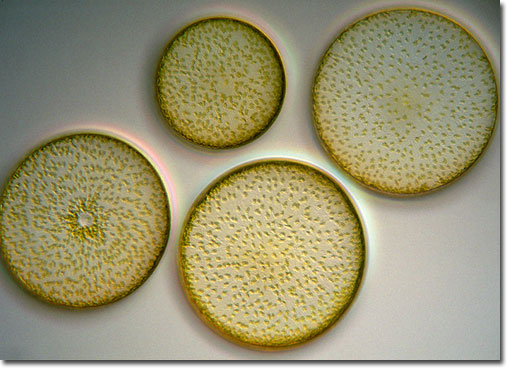|
Many diatoms are planktonic, but some species attach to substrates, such as plants or rocks, while others are bottom dwellers. The organisms range in size from approximately 2 micrometers to several millimeters, though only a few exhibit diameters greater than 200 micrometers. Typically, diatoms are divided into two basic categories: the radially symmetric Centrales, such as Coscinodiscus, and elongate, bilaterally symmetric Pennales. In addition to their disparity in shape and symmetry, the two orders of diatoms may differ in their ability to locomote. Often Centrales are considered to be nonmotile, while Pennales may move through aquatic environments with a gliding motion facilitated by mucilage secretions.
|
